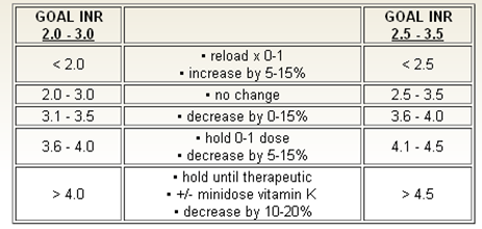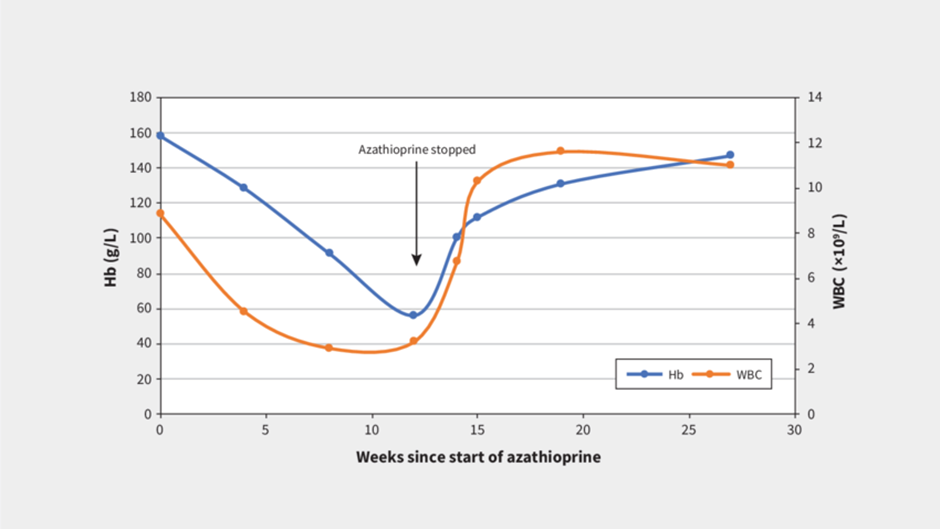A nurse is reviewing the laboratory results of a client who has atrial fibrillation and a prescription for warfarin. After informing the provider that the INR is 2.5, the nurse should expect which of the following prescriptions?
Decrease the dose of the medication.
Increase the dose of the medication.
Withhold the medication.
Administer the current dose of the medication.
The Correct Answer is D
Choice A Reason:
Decrease the dose of the medication is incorrect. Lowering the dose could potentially drop the INR below the therapeutic range, increasing the risk of clot formation.
Choice B Reason:
Increase the dose of the medication is incorrect. Raising the dose might push the INR above the therapeutic range, increasing the risk of bleeding.
Choice C Reason:
Withhold the medication is incorrect. Withholding the medication might lead to inadequate anticoagulation and an increased risk of clot formation.
Choice D Reason:
Administer the current dose of the medication. An INR of 2.5 is within the therapeutic range for many indications, including atrial fibrillation. This means the blood is appropriately anticoagulated to prevent clot formation without an excessive risk of bleeding. In this scenario, maintaining the current dose of warfarin is often appropriate to sustain the desired therapeutic effect.

Nursing Test Bank
Naxlex Comprehensive Predictor Exams
Related Questions
Correct Answer is B
Explanation
Choice A Reason:
Remove duplicate medications of different dosages from the reconciliation is incorrect. Removing duplicate medications with different dosages from the reconciliation is indeed essential. However, the primary focus during transfer is to compare the current medication list with the new regimen to avoid omissions or discrepancies in the transition process.
Choice B Reason:
Compare the current list of medications to medications the client will receive after transform is correct. Comparing the current list of medications, the client is taking to the medications they are expected to receive after transfer is crucial for ensuring a seamless transition of care. This process helps identify discrepancies, potential interactions, or changes in the medication regimen between settings, ensuring the continuity and accuracy of medication administration.
Choice C Reason:
Omit over-the-counter medications from the at-home medication list is incorrect. Over-the-counter medications should ideally be included in the medication reconciliation process to provide a comprehensive overview of all medications the client is taking, including potential interactions with prescribed medications.
Choice D Reason:
Include medications the client received in the acute setting but will no longer need after transfer is incorrect. The reconciliation process should aim to update the medication list to reflect the client's current and future medication needs accurately. Including medications, the client received in the acute setting but won't need after transfer might introduce unnecessary medications into the new regimen. These should be communicated but not included in the ongoing medication list.
Correct Answer is B
Explanation
Choice A Reason:
BUN 15 mg/dL (blood urea nitrogen) is incorrect. An elevated BUN level can indicate kidney dysfunction or dehydration, but it's not typically associated with azathioprine's adverse effects. Azathioprine is known to affect bone marrow, leading to decreased blood cell counts, rather than directly impacting kidney function.
Choice B Reason:
WBC 3,000/mm³ (low white blood cell count) is correct. Azathioprine is an immunosuppressive medication used to treat various conditions, including rheumatoid arthritis. One of its known adverse effects is bone marrow suppression, which can lead to decreased production of blood cells, including white blood cells (WBCs). A low WBC count (leukopenia) can increase the risk of infections due to compromised immune function, making it an important adverse effect to monitor in individuals taking azathioprine.
Choice C Reason:
Hct 45% (hematocrit) is incorrect. A hematocrit of 45% is within the normal range for both men and women. Azathioprine adverse effects usually manifest as blood cell-related issues (such as leukopenia) rather than directly impacting hematocrit levels.
Choice D Reason:
Platelets 250,000/mm³: Platelets within the range of 150,000 to 400,000/mm³ are considered normal. Azathioprine typically affects white blood cells more prominently than platelet counts.

Whether you are a student looking to ace your exams or a practicing nurse seeking to enhance your expertise , our nursing education contents will empower you with the confidence and competence to make a difference in the lives of patients and become a respected leader in the healthcare field.
Visit Naxlex, invest in your future and unlock endless possibilities with our unparalleled nursing education contents today
Report Wrong Answer on the Current Question
Do you disagree with the answer? If yes, what is your expected answer? Explain.
Kindly be descriptive with the issue you are facing.
